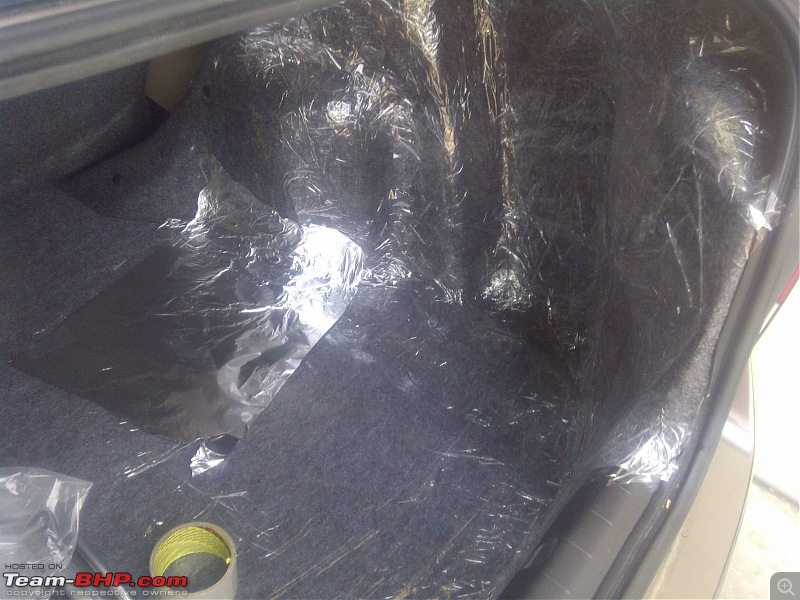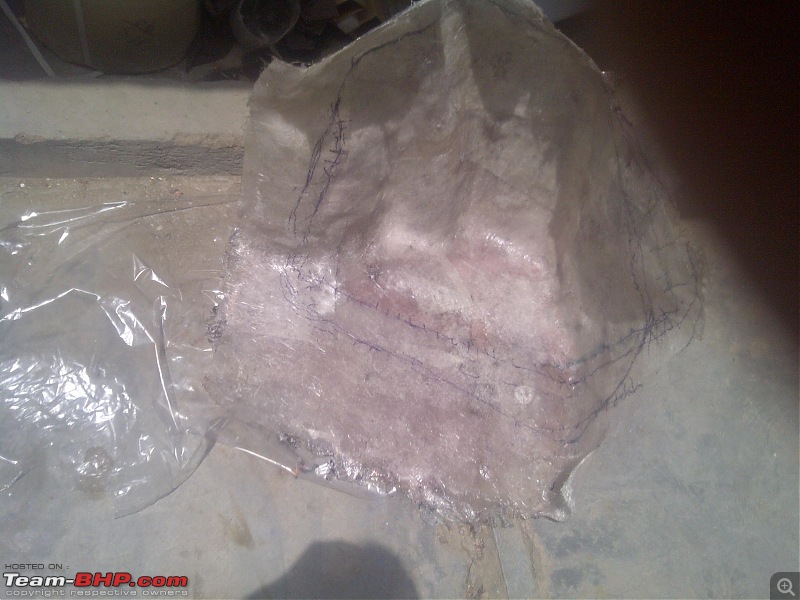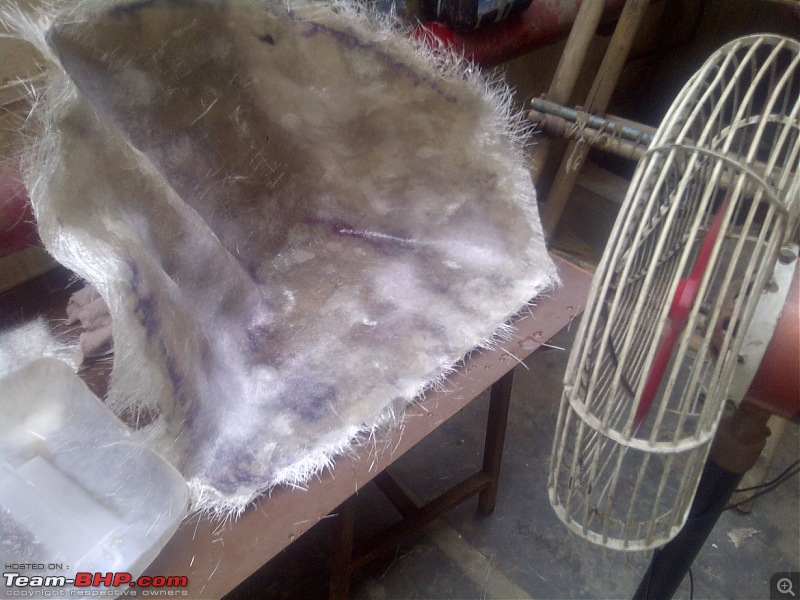Quote:
Originally Posted by DerAlte  * What is the thickness you are targetting? Maybe you can think of using good 6mm ply sandwiched between 2 FG layers - will give much better strength / rigidity to the large areas (search for Navin's recommendations on this) |
Quote:
Originally Posted by yashshroff  thanks for the info...
the layer with more catalyst was used as the last one so mould could be taken out, i am not sure of the voids, so wont use higher mixes now.. 
i was targeting approx 1.5cm thick, i dont know how to do the sandwich thingy, i did find a post with some mention of sandwiching marine ply but could not get a response.
If i have to sandwich, will it only be the base ? cause there are not many big areas ?
Sub mostly idv3 12, and going by manufacturers sealed box volume of .8 to 1.5 cu. ft, going for a box with approximately 1 cu. ft. excluding the woofer volume. Hope it works well  |
Quote:
Originally Posted by R. Kotwal  thanks
I would strongly advise you not to sandwhich any material ( like plywood and hardboard) that facilitates creation of asymmetrical air pockets between layers of fiberglass it is would compromise its integrity.
However, if there should exist a requirement of making it sturdier around the curves or other facets that cant be adequtely covered by strips of fiberglass chopped mat , you could think of mixing fiberglass microspheres ( very small fiberglass bits) and resin and apply it like a paste.
You could also strengthen it by applying 3 layers of fiberglass cloth alternatively between subsequent layers of the chopped mat.
A foam sandwhich , would be slightly more complicated since it would be hard to source expanding urethane foam in India. |
A speaker box needs be be stiff
and damped (aka non-resonant). Fiberglass (FRP / FG) gives stiffness but is resonant. Wood is well damped but is not as stiff (per mm thickness) as FG/FRP. I have
successfully made speaker boxes from layers of FG/FRP and marine ply (6mm) and bent them in 2 planes (simple curved boxes).
A plain FRP box can be bent along all 3 planes (any shape you want). The boxes I have made are 3 layers of marine ply with 2 layers of FRP the total thickness coming to about 21mm (22-23 mm with veneer and polyurathene polish) but the resultant box is stiffer than 30mm marine ply and almost as well damped.
Your method of using chopped fiberglass mat is excellent to increase the strenght of the box (and I have used this too especially around the speaker mounting andbox corners (areas of high stress) but chopped fiberglass mat does nothing to
damp the resonance of the box.
Fiberglass cloth is actually not as strong as the rovings Yash has used. However it is easier to spread. A combination of mat + chopped strands should give the best combination of ease and build and strength.
My initial opinion (in the early 80s) was that a box needs to stiff, damped and light. Stiff to prevent flex, damped so that it does not resonate like a tin drum, and light so it stores as little energy as possible. This followed from the research done sby B&W (801 series), Celestion (SL 600/6000 series), etc. I tried to make light boxes but they all were terrible then one day I was told (by someone who I hold is high esteem) that current research (current as in 1995) has shown that a speaker box needs to have
"some" weight and to aim for ultra-light boxes is fool hardy and would not lead to a sound box.
I am quite happy with my marine ply - FRP solution and the boxes have remained stable for the past 15-16 years. If I need to add weight to move the resonace of the box outside the badnwidth I add some lead sheet (1.5mm lead sheet is easily available in Mumbai). My last speaker box (10" wide, 48" tall, 16" deep) was about 45-50 kgs per box. The ply is stressed by bending it so it becomes stiffer and also ensures that the panels are not parallel (reducing standing waves).
Yash,
Sorry for not replying to your earlier posts on the thread linked. I usually try to respond to most posts involving complex speaker boxes. I did most of my box building from the late 70s (all MDF) through the 80s (where I worked with MDF, Plys, Hardwoods and Concrete) till about 1995 (my last speaker boxes used the above mentioned FRP-Ply combination as my earlier concrete speaker boxes prived diffcult to shift).
The last concrete boxes I made were 2 10 cu. ft. boxes using 5 sides of 40mm concrete and a MDF/Marine play baffle (with a sand filling). Each box housed a 18" JBL 2245 and was based on the JBL B460 bass bin. Each of these boxes weighed in at 150kgs+ and I needed a air cushion mobility system (I used the following see link :
Appliance, Furniture, Safe & ATM Movers, Moving Equipment & Systems – Air Sled) to move the box around. The sand was not so much used to damp the resonances but used to absrob the energy as was done by the Kinetic Tennis racquet made by a company called Kennex in 1980s (now called Pro-Kennex). A modern version of this racket is here:
BTW I still have the airseld and my dream is to build a huge AV rack (from solid Mahagony, Marine Ply, Brass, and Granite) integrate the air sled into the chassis of rack (but that is another mad story).
 (2)
Thanks
(2)
Thanks
 (1)
Thanks
(1)
Thanks

 (1)
Thanks
(1)
Thanks
 (1)
Thanks
(1)
Thanks
 (1)
Thanks
(1)
Thanks
 (1)
Thanks
(1)
Thanks

 (2)
Thanks
(2)
Thanks

 (1)
Thanks
(1)
Thanks





















 ) in that much, not sure lets see..
) in that much, not sure lets see..




 But it is very tiring and the heat kills it even more
But it is very tiring and the heat kills it even more